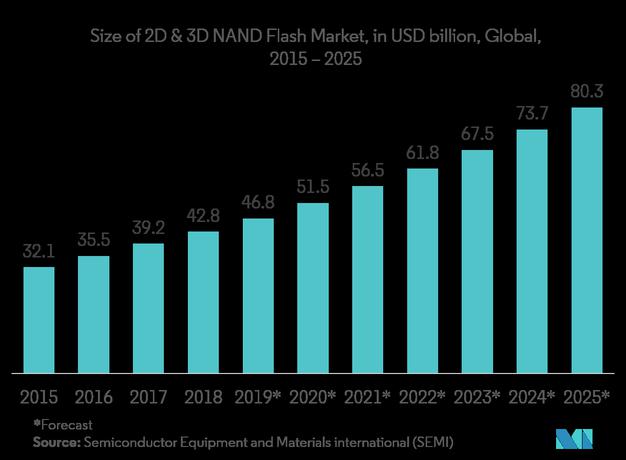Solid-state drives (SSDs) power data center arrays and high-performance computing (HPC) workloads.
They significantly increase storage speeds, so quick access to stored data can be a realistic, economical option within enterprise workload environments.
The following trends signal further growth and improvement within the SSD market:
5 Solid-State Drive Trends
Also Read: SSD Market: Intro, Features, Benefits and Best Providers
1. PCIe 4.0 SSDs
The newest active peripheral component interconnect express (PCIe) generation, Gen 4, provides increased opportunity for bandwidth and computing efficiency. Users can decide which generation they want depending on the application, according to Seagate Technology.
“PCI Gen 4 gives you the choice of either reducing complexity of the system and using fewer lanes to connect (which boosts efficiency by reducing power) or getting more bandwidth than the prior generation (which boosts performance),” said a Seagate spokesperson.
These applications involve hot storage in which data must be rapidly accessed, they said.
“PCIe Gen 4 can achieve transfer speeds of 7 GB/s with 4 lanes (PCIe Gen 4 is a 16 Gb/s per lane connection). This is doubling from last generation’s transfer speed: Gen 3’s bandwidth was 3.5 GB/s with 4 lanes (PCIe Gen 3 is a 8 Gb/s per lane connection).”
Also Read: Kioxia Introduces PCIe 4.0 Storage Class Memory SSDs
2. New Intel Optane SSDs
Intel’s Optane line is intended to bridge the gap between dynamic random access memory (DRAM), or main memory, and storage, which has much more space but is traditionally much slower, according to the company. Intel first introduced its Optane SSDs in 2017. One of the newest Optane drives, the P5800X, supports PCIe 4.0 and is intended for workstation use.

A new use case for Optane drives is the cryptocurrency realm: a new currency, Chia, needs significant storage space to be prepared for data farming, and high-power, enterprise-level solid-state drives offer that storage space.
3. SAS Isn’t Going Anywhere: New Samsung SSD
In April 2021, Samsung released the PM1653 SSD, which supports Serial Attached SCSI (SAS) and is made with sixth-generation V-NAND chips. SAS has faster transfer rates than Serial ATA (SATA), and it’s designed for enterprise and data center workloads.
KIOXIA expects value SAS to replace SATA for server applications. While SATA doesn’t have many significant advancements in recent years, major storage players, like Samsung, continue to develop SAS drives. Value SAS offers higher read/write bandwidth than SATA as well as higher read/write IOPS.
4. NVMe SSDs and NVMe-oF
Non-volatile memory express (NVMe) SSDs provide a much more direct path to a server’s CPU than SAS or SATA drives; they bypass a controller and use the PCIe bus instead. Because an application running on an NVMe drive is closer to the processor, latency is reduced. All data from the application is closer to the CPU too.
NVMe also optimizes data centers’ storage capacity: because fewer commands and interfaces are required for a user to reach the data, data center overhead is also reduced.
NVMe over Fabrics (NVMe-oF) is still new to the data center market. This technology makes non-volatile memory available to an entire data center network, using InfiniBand, Ethernet, or Fibre Channel as the network. Not all centers have adopted it; some still use spinning-disk and tape technology, which is more appropriate for archived data. But for hot data and critical workloads, NVMe-oF shows promise.
StorONE implemented NVMe-oF in 2021, supporting the technology in its S1 Enterprise storage software. StorONE treats NVMe-oF as a feature of its storage platform, not a stand-alone solution.
NetApp, too, is using NVMe-attached SSDs in its data management.
“In order to fully realize the benefits of NVMe-oF with both NVMe/FC and NVMe/TCP, companies are looking to transition from SAS-based SSDs to NVMe-attached SSDs for lower latency and improved performance,” said NetApp’s Praveena Vajja, vice president of product management for ONTAP.
NetApp is also partnering with leading SSD vendors to continue exploring advancements in SSDs, Vajja said.
NVMe and NVMe over Fabrics will continue to become more popular in data center environments, according to market growth predictions.
Also Read: High Performance Data Storage
5. SSD Storage at the Edge
High-speed data processing happens at the edge of a network too. Edge applications bypass the distance between the device and the data center, but they need a low-latency storage medium to deliver.
Ian Clatworthy, product marketing manager at Hitachi Vantara, a storage and service management provider, said it’s pressing to automate SAS and NVMe technologies.
“The ability to intermix these technologies seamlessly and agnostic of the workload drives efficiency for customers,” Clatworthy said. “At the edge, we see the rapid adoption of AI to run analytics against live telemetry data, driving the need for high-performance compact NVMe solutions.”
AI is a major trend for edge applications: fast-moving data analytics require heavy computational intelligence. SSDs can power that.
Read Next: Best and Fastest SSDs




